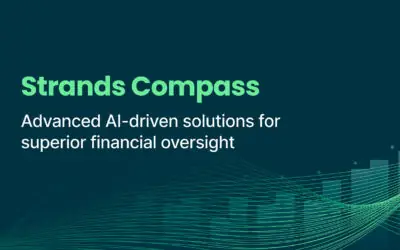What does the future of traditional and digital banking look like? A challenging but inspiring question, providing remarkable food for thought. To identify the banking trends that will define 2023 and beyond, we have looked at how banks, their customers and their needs have evolved and what that means for data, platforms and processes. Here’s a recap of what we found out:
Green banking and ethical banking
As the climate crisis intensifies, the pressure on every industry to step up and take action is growing, and banking trends are adjusting accordingly. In 2023, digital banking trends will reflect a focus on sustainability, ESG and ethical impact finance.
Looking at Forrester’s predictions, the global green banking’s value will reach $1.2 trillion after a year of stagnation. The global green finance market will recover from 2022 as governments and financial corporations boost green financing activities to help economic recovery and meet climate goals. Green bonds will represent 75% of the green finance market, driven by the Next Generation European Union program to help post-pandemic recovery. Moreover, in 2023 there will be more adult Gen Zers than adolescents for the first time – about half the size of the millennial population. This digitally native generation relies heavily on digital for their finances and demands more action in terms of green banking and ethical banking, which won’t change in the next year.
More and more banks are expected to adopt carbon trackers, offering customers insights into their CO2 footprint based on their spending behavior. At Strands, we’re aware that green sustainability and ESG are consumers’ top priorities these days, especially for the youngest generations. If you’re interested in finding out more about our green banking and ethical banking solutions, get in touch with an expert.
Banking on artificial intelligence
The financial services industry has entered the AI phase of a digital marathon, pushed by the explosion of big data, availability of infrastructure and skyrocketing competition. From enabling frictionless onboarding to preventing payment fraud, the uses of AI in banking are far-reaching. However, the real game changer is its capacity to deliver a robust personalization strategy. By leveraging AI and machine learning, banks can turn every interaction with their customers into a guided and meaningful conversation.
Artificial intelligence has the power to fully transform the banking customer experience by making it hyper-personalized to satisfy different customer segments. In our e-book, “Making it Personal”: How AI is driving the banking revolution you can find out more about the most innovative technologies that will set the pace for 2023.
Cloud based solutions
Everything in banking is about handling data, and as we have seen in 2022, the data that banks handle is growing immensely and will continue to do so in 2023. In order to better connect these data and turn them into a thriving ecosystem, cloud based solutions can provide state-of-the-art organization.
Strands’ mission as a software company is applying expertise in artificial intelligence and machine learning to revolutionize the banking experience. By distributing our technology through cloud based solutions as a service, we help banks and financial institutions from all over the world grow. Strands’s SaaS solution requires less effort for its customers to implement and integrate with digital banking than its previous on-premise software. This means banks can launch the service and get the capability in front of customers much faster.
Data aggregation, innovation’s driver in consumer finance
There’s no doubt that data aggregators are enabling innovation in consumer finance, and they’re set to do even more so based on the banking trends detected for 2023. Open Finance enables users and SMEs to connect third party services, both financial and non financial, in order to gain a 360 degrees overview of their situation, thus enhancing their financial control and education.
Every financial data aggregator in place can contribute to improving the banks’ business models, and ultimately the financial wellness of their customers. As data is indisputable nowadays, banks will need to find more and more effective ways to harvest, analyze and use raw data to set an unprecedented pace for their customers. If you’re interested in financial data aggregator benefits and want to know more about Open Finance, find out how Strands’ Open Hub can help you unlock your potential and keep up with 2023 banking trends.
The era of embedded finance
Bolstered by increasing demand for more frictionless payments, embedded finance is growing dramatically. According to McKinsey, the industry grew into a US$20bn market in the United States alone in 2021, and it is expected to treble in the following 3-5 years before becoming a US$7tn industry globally in the next decade.
Embedded finance allows banks to provide new, fast, and easy experiences to their customers that add value to their services and encourage brand loyalty. With embedded payments, customers and businesses can enable instant payment transactions in just a click. In the coming year, we can expect to see companies using embedded finance to integrate financial services in non-bank products and business processes, as well as banks using it to help SMEs grow.
Conclusion
With no doubt 2023 will be a significant year for the financial industry – full of technological disruption, regulations, and new banking trends. Out of all the top digital banking trends in 2023, embedded finance and green banking will be the most remarkable. AI technology will keep shaking the market and help businesses to reduce overhead costs. In addition, SaaS platforms will continue to improve customer and user experience. Two things are certain: first, consumers will always demand more frictionless experiences. Second, they will place their trust and take their business to the players that deliver on those digital expectations.



